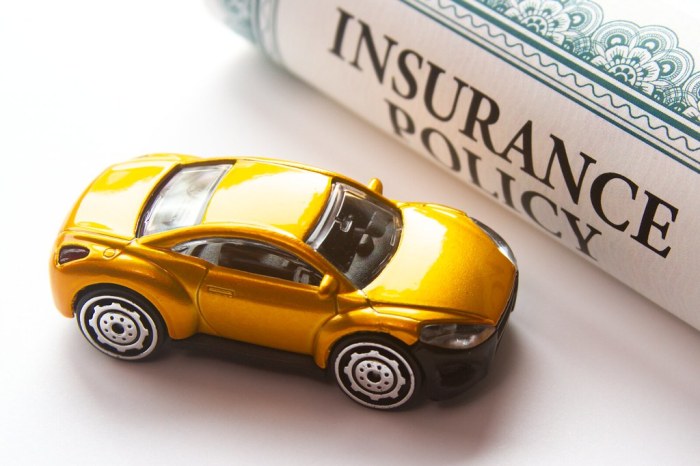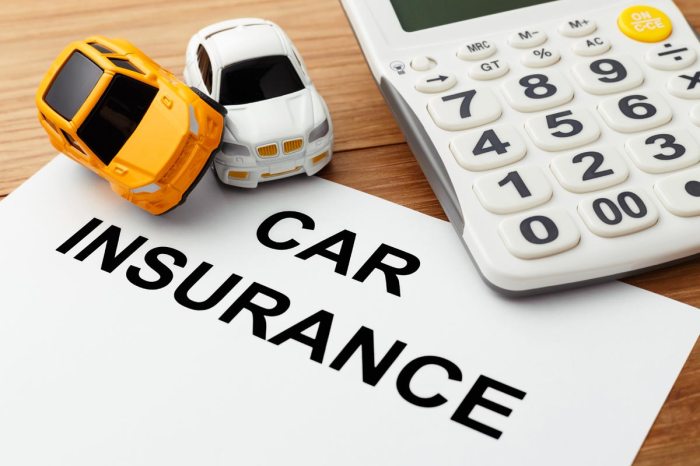Securing the right car insurance is a crucial step in responsible vehicle ownership. More than just a legal requirement, choosing the appropriate plan safeguards your financial well-being in the event of accidents, theft, or damage. This guide unravels the complexities of car insurance plans, empowering you to make informed decisions that best suit your needs and budget.
From understanding the different types of coverage – liability, collision, comprehensive, and uninsured/underinsured motorist – to comparing providers and maximizing discounts, we’ll equip you with the knowledge to navigate the world of car insurance with confidence. We’ll explore the factors influencing premiums, demystify policy documents, and walk you through the claims process, ensuring you’re prepared for any eventuality.
Factors Affecting Car Insurance Premiums

Several key factors influence the cost of your car insurance premium. Insurance companies use a complex algorithm considering various aspects of your profile and vehicle to assess your risk and determine a fair price. Understanding these factors can help you make informed decisions to potentially lower your premiums.
Driver Age and Experience
Younger drivers, particularly those with less than three years of driving experience, are statistically more likely to be involved in accidents. This increased risk translates to higher premiums. Conversely, older drivers with a long, clean driving record often qualify for lower rates due to their accumulated experience and lower accident probability. For example, a 17-year-old new driver might pay significantly more than a 45-year-old with a 20-year accident-free driving history. Insurance companies often offer discounts for completing defensive driving courses, which can mitigate the higher risk associated with younger drivers.
Driving History
Your driving record is a crucial factor. Accidents, speeding tickets, and other moving violations significantly increase your premiums. The severity and frequency of these incidents directly impact the cost. For instance, a single at-fault accident could lead to a substantial premium increase for several years, while multiple violations might result in even higher costs or policy cancellation. Conversely, maintaining a clean driving record for an extended period can lead to significant discounts and lower premiums.
Type of Vehicle
The type of car you drive also affects your premium. Sports cars and high-performance vehicles are generally more expensive to insure due to their higher repair costs and increased risk of theft. The safety features of your vehicle also play a role. Cars with advanced safety technologies, such as anti-lock brakes and airbags, may qualify for discounts. For example, insuring a luxury SUV will likely be more expensive than insuring a compact sedan, even if both vehicles are relatively new.
Location
Where you live significantly impacts your insurance rates. Areas with high crime rates, a high frequency of accidents, or a higher prevalence of vehicle theft will generally have higher premiums. Insurance companies use geographical data to assess the risk in different locations. For instance, someone living in a densely populated urban area with a high accident rate might pay more than someone living in a rural area with lower crime and accident statistics.
Hypothetical Scenario
Consider two drivers: Sarah, a 22-year-old with one speeding ticket and drives a used sports car in a major city; and John, a 40-year-old with a clean driving record driving a mid-size sedan in a suburban area. Sarah’s higher age, driving record infraction, vehicle type, and location will result in a significantly higher premium compared to John’s. While precise figures vary by insurer, Sarah could be paying double or even triple what John pays, highlighting the cumulative effect of these factors.
Filing a Claim

Filing a car insurance claim can seem daunting, but understanding the process can make it significantly less stressful. This section Artikels the steps involved, from initial reporting to receiving compensation, emphasizing the necessary documentation and providing examples of common claim scenarios.
The process generally begins with promptly reporting the incident to your insurance provider. This initial report triggers the claims process and allows your insurer to start investigating. The speed and efficiency of the claim resolution depend heavily on the accuracy and completeness of the information you provide at this stage.
Reporting the Incident
Following an accident, immediately contact your insurance company’s designated claims line. Provide them with all pertinent details, including the date, time, and location of the incident; a description of what happened; the names, contact information, and insurance details of all parties involved; and details of any witnesses. If possible, take photos of the damage to all vehicles and the accident scene itself. Accurate and timely reporting is crucial for a smooth claims process. Delaying the report could potentially impact your claim’s outcome.
Providing Necessary Documentation
Supporting your claim with comprehensive documentation is essential. This typically includes the police report (if applicable), photographs of the damage, your driver’s license, vehicle registration, and insurance policy information. You may also need medical records if injuries are involved, repair estimates from a certified mechanic, and any witness statements. The more thoroughly you document the incident, the stronger your claim will be.
Common Claim Scenarios and Procedures
Several common scenarios illustrate the typical claims procedures. For instance, in a single-vehicle accident, like hitting a deer or a tree, you’ll need to provide details of the incident, photographs of the damage, and potentially a police report. In a multi-vehicle accident, you’ll need to gather the same information from all involved parties and ensure consistency in the accounts of the event. Claims involving injuries often require more extensive documentation, including medical bills and records detailing the extent and treatment of injuries. A comprehensive and well-documented claim, regardless of the scenario, improves the chances of a successful and timely resolution.
Final Thoughts

Choosing the right car insurance plan is a personal journey, dependent on individual needs and risk tolerance. By understanding the various coverage options, factors affecting premiums, and the claims process, you can confidently select a plan that provides adequate protection without unnecessary expense. Remember to regularly review your policy and take advantage of available discounts to ensure you maintain optimal coverage at the best possible price. Driving safely and responsibly is also key to keeping your premiums low.
FAQ
What is the difference between liability and collision coverage?
Liability coverage pays for damages you cause to others, while collision coverage pays for repairs to your vehicle regardless of fault.
How often can I expect my car insurance premiums to change?
Premiums are typically reviewed and adjusted annually, sometimes more frequently depending on your driving record and other factors.
Can I cancel my car insurance policy early?
Yes, but you may be subject to early cancellation fees. Check your policy for specifics.
What should I do if I’m involved in a hit-and-run accident?
Report the accident to the police immediately, then contact your insurance company as soon as possible to file a claim.
How does my credit score affect my car insurance rates?
In many states, your credit score is a factor in determining your insurance rates. A higher credit score generally leads to lower premiums.